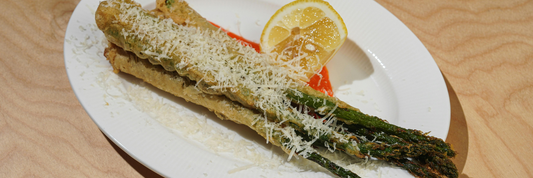Cutting boards are essential tools in every kitchen, valued for their versatility and durability. But when it comes to handling hot dishes or baking, many home cooks wonder: can a cutting board go in the oven? Whether you’re looking for a quick way to transfer food or thinking about using your board as a makeshift baking tray, it’s important to understand how different cutting board materials react to high heat. In this post, we’ll explore the risks, best practices, and safer alternatives so you can keep your kitchen safe and your cutting boards in great shape.
- Can Paper Bowls Go in The Oven? Understanding the Safety and Limits
- Can You Use Wax Paper In Oven? What Happens When You Put Wax Paper in Oven?
Understanding the Heat Resistance of Cutting Boards
- Wooden and Bamboo Boards: These boards are generally not intended for oven use. Exposure to high heat can cause them to warp, crack, or even pose a fire hazard due to the flammable nature of wood and bamboo.
- Plastic Boards: While some plastic cutting boards are marketed as heat-resistant, heating them can cause the release of harmful chemicals and is not recommended.
- Glass and Composite Boards: Tempered glass boards can tolerate higher temperatures and are suitable for placing hot dishes, but they are not designed for cutting items straight from the oven or for use as bakeware.

What Happens If You Put a Cutting Board in the Oven?
- Warping or Cracking: Wood and bamboo boards will likely warp or crack due to uneven or excessive heat.
- Melting: Plastic boards can melt, deform, or release harmful fumes.
- Smell or Smoke: Glues or finishes used in laminated or composite boards may emit unpleasant odors or smoke when heated.
- Risk of Fire: Wooden and bamboo boards, especially if dry or damaged, can ignite at high temperatures, posing a serious fire hazard.
Risks of Placing Cutting Boards in the Oven
- Warping and Cracking: Wooden cutting boards are especially prone to warping or cracking when exposed to uneven or high heat.
- Fire Hazards: Dry or cracked wooden boards can ignite in the oven, creating a serious fire risk.
- Damage to Adhesives: Laminated boards use glue that can weaken or separate when subjected to oven temperatures, reducing the board’s structural integrity.

Which Cutting Board Materials Can Go in the Oven?
1. Wooden Cutting Boards
Wooden cutting boards are not oven-safe. Exposing them to oven heat will cause the wood to dry out, warp, crack, or, in extreme cases, catch fire.
2. Bamboo Cutting Boards
Bamboo cutting boards are also not oven-safe. Bamboo is sensitive to heat and can easily warp or split when placed in the oven. These boards are best used on countertops for prep and serving, not for baking or roasting.
3. Plastic Cutting Boards
Most plastic cutting boards will melt or deform in the oven. While some professional-grade, heat-resistant plastics exist, they are not typical for home kitchens and should only be used if specifically labeled as oven-safe.
4. Tempered Glass Boards
Tempered glass cutting boards can technically withstand high temperatures. However, they are not suitable for cutting hot items from the oven, can be slippery, and are harsh on knives.
5. Composite/Resin Boards
Some composite or resin boards are engineered to resist temperatures up to about 350°F (176°C). However, always check the manufacturer’s instructions before using them in the oven, as not all composite boards are heat-resistant.
Why You Should Avoid Putting Cutting Boards in the Oven?

Even though it might be tempting to use your cutting board in unconventional ways, there are several reasons to avoid putting most cutting boards in the oven:
- Material Damage: Wooden and plastic boards can warp, crack, or melt.
- Health Risks: Heating certain plastics can release harmful fumes.
- Safety Hazards: Materials not designed for high temperatures may catch fire or emit smoke.
- Ineffectiveness: Cutting boards are not designed for even heat distribution, leading to poor performance compared to proper oven-safe tools.
Conclusion
In short, most cutting boards are not suitable for oven use. While silicone boards may be an exception, it’s always best to rely on tools specifically designed for high heat. Avoid the risk of damaging your cutting board or compromising safety by using proper oven-safe cookware instead. Always check the material specifications before attempting unconventional uses in your kitchen.




